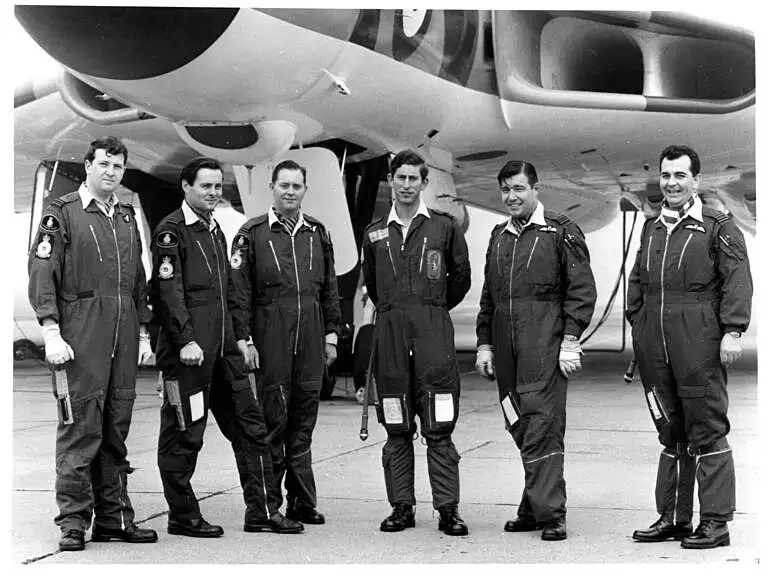
Exercise Golden Eagle
On 27 July 1971, during his Royal Air Force training to become a jet pilot, King Charles III (HRH Prince Charles at the time) was introduced to the Vulcan. The
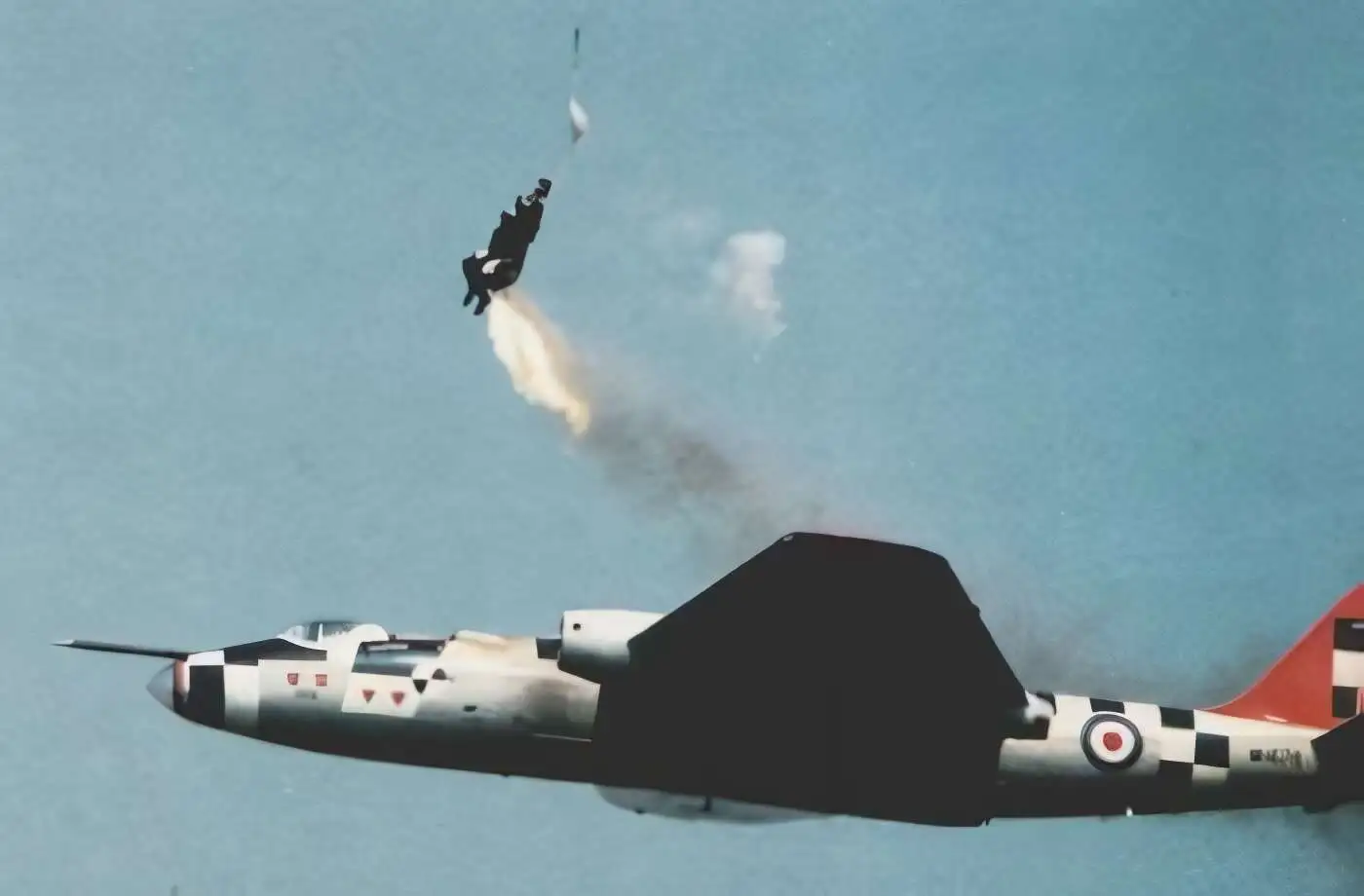
Navigator training was carried out at Air Navigation schools in Hullavington and Bishop’s Court (Ulster). The basic air training was carried out in Ansons, with a pilot, wireless operator and two trainee navigators, sometimes a staff navigator as a supervisor. The flying classroom was a Valetta with 10 navigational positions, and a supervisory position. Imagine doing a navigation exercise of 2.5 hrs within the confines of Ulster! Advanced training was at Thorney Island using Varsitys, and Marathons.
The buildup of aircrew during the Korean War meant a period of waiting of up to 6 months before progressing to the OCU’s (Operational Conversion Units). There were some interesting postings whilst waiting, mine was to the Ops rooms at Biggin Hill, which had 41 Squadron and 600 and 605 Auxiliary Squadron, flying Meteor F8s and a working week of Wednesdays to Mondays, and even then QRA (Quick Reaction Alert). I managed to fly in the Meteor FVII trainer doing target towing for gunnery practice of the F8.
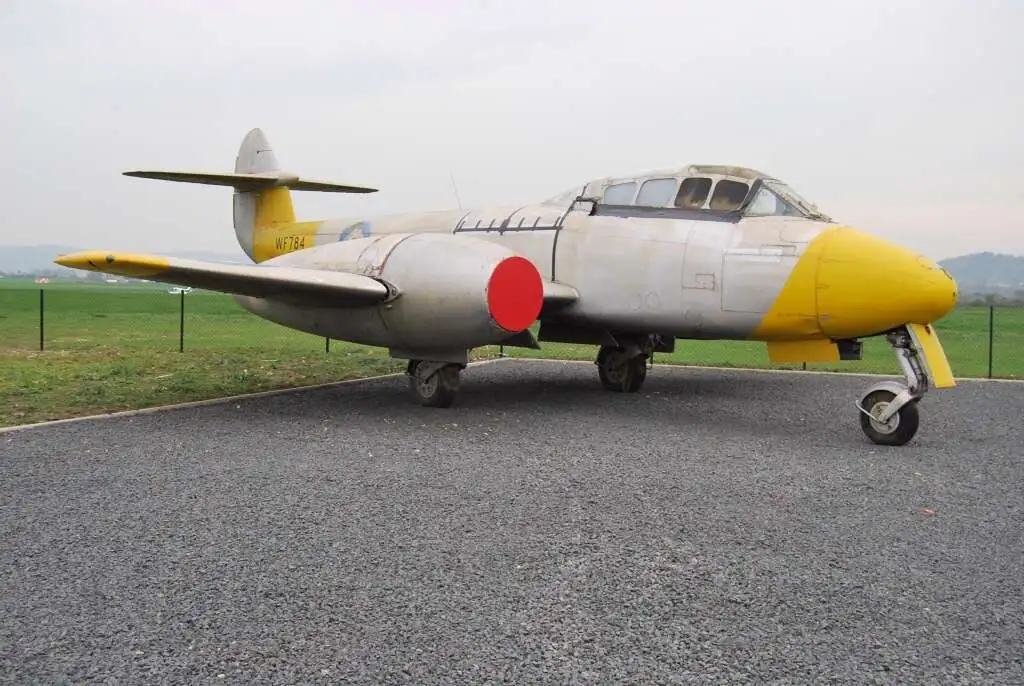
Gloster Meteor T7 – WF784 © Jet Age Museum – Example of world’s first two-seat jet trainer
Now back to training – a short refresher course at Shawbury then to Bombing School at Lindholme. Pilots and navigators attended to learn the very basics of bombs and bombing techniques. Those destined to become Navigators/Bomb aimers, like me, had a much more extensive course of two months, flying Lincolns and Varsitys. The ideal combination was visual from the Lincoln and radar from the Varsity, guess who didn’t do visual from the Lincoln.
Now, off to the Canberra OCU at Bassingbourn.
Bassingbourn was packed. Two Officers Messes and 40 Caravans to accommodate the large numbers passing through, both bomber and photo reconnaissance crews. I was in a caravan, an interesting experience. During ground training you met up with pilots, navigators and bomb aimers, and you were expected to find your own crew.
Two aspects of training I still remember. As a bomb aimer for visual bombing you were in the nose but your “bang seat” was in the back and you were expected to be able to return to your ejection seat, blind folded in 30 seconds. The straps on the ejection seat were arranged such that when you flung yourself into the seat, the parachute straps fell first, and the seat harness was held in readiness. When confronted with the electrical circuitry of the Canberra, the instructors made us do it without their help. It’s amazing what you can think of when presented with this task. But it gave you satisfaction when completed.
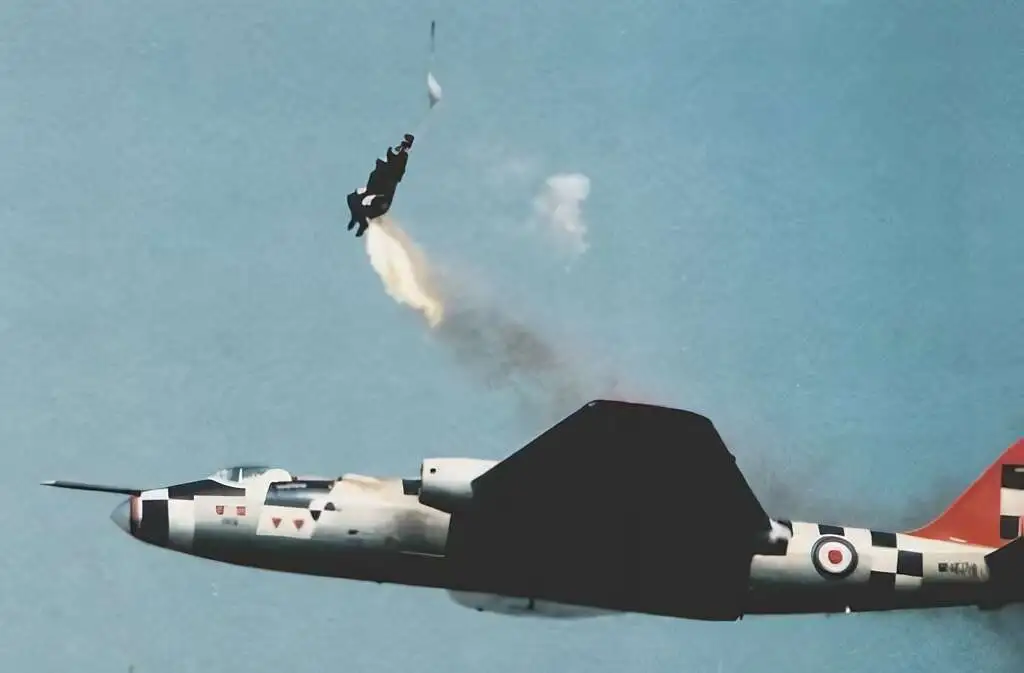
WH876-mid 70s with A&AEE at Boscombe Down – Martin Baker ejector seat tests
The B2 was a three-man crew, pilot, navigator/plotter and navigator/radar, and a rumble seat for supervisory crew or passengers. If this was occupied it necessitated some squeezing by, in emergency it was very dicey for a nav/rad in the nose. Flights combined training for all positions, with both visual and radar bombing, navigation requiring close cooperation between the two navigators, the radar using GeeH and visual for the plotter. Most bombing ranges are on the coast except for one near Oxford, luckily we had no OBA’s (Outside Bombing Area). Take a Virtual Tour of English Electric Canberra B.2 (WE113) courtesy of Harald Joergens Photography
Now to 76 Squadron, as a crew training to reach Combat status. There were three categories of competence, Combat, Combat Star and Select. No QRA. They were crewed by young airmen. With two Canberra and one Valiant Squadron on the base dining-in nights could get quite boisterous and noisy.
I noticed that one navigator had been absent from the Squadron for long period of time. The answer was that he was an athlete and went away for training before the RAF Athletic Championships, representing Bomber Command. For the next three years I followed the same path, a fortnight training as Bomber Command triple jump champion.
The Squadron had recently come back from a training period at Habbaniya (Iraq) and there was a “Chicko” graph on the wall which was nearly vertical.
Life was relaxed, ready and trained, carrying out the usual training tasks with bombing heights increasing to visual at 35,000 feet. A full bomb load (6 x 1,000lbs) take-off, when it took a bit longer to become airborne. Navigation using radar, visual and astro aids. Once you reach “combat” you were rewarded with a weekend overseas trip. Ours was to Wunsdorf, near Hanover, a pre-war German fighter station with a pre-war Officers Mess.
Bomber Command carried out many exercises, one I remember was tasked to fly against the Navy’s carrier group in the North Sea. One condition was a height limit of 35,000 ft, as that was the maximum for the carrier aircraft. The final day of the exercise, Command said maximum height, therefore 48,000 ft for our aircraft. The carriers’ airborne defence was seen to be floundering way below.
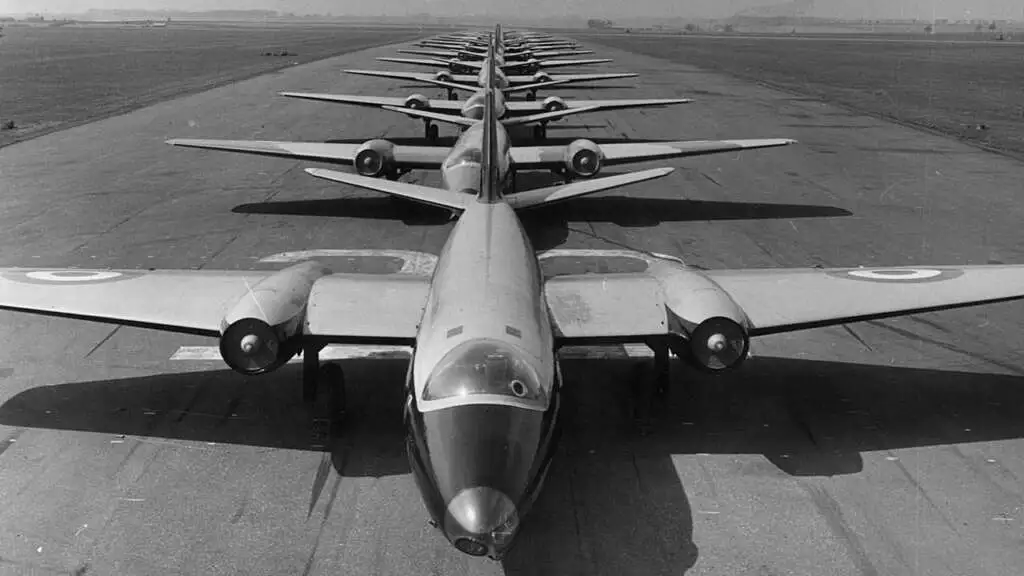
Line of Canberra’s
After four months and 125hrs the 76 Squadron folded, Canberra Squadrons were slowly being replaced for the start of V-force. Wittering already had 138 Valiant Squadron on site. Some squadron personnel went as crews across the hanger to 40 Squadron, a Canberra Squadron. The more senior crews left for V-force and three crews and four navigators were posted to a reformed 542 Squadron at Weston Zoyland, the navigators going to Kinloss to join the two-man crews of 1321 flight.
76 Squadron was later reformed at Weston Zoyland as part of the nuclear testing in Australia. Later it was to become 542 C Flight, for Operation Grapple tests at Christmas Island.
The 540 group of squadrons were formed during World War II for special reconnaissance, 542 was formed to photograph the Dams raid.
It was now reformed from 1321 Flight, a sniffer unit, to Squadron level. Our task was collecting air samples, mainly in the north, from the testing being done by America and Russia. We were flying in areas not fully covered by Gee and neither Mercator nor Lamberts Conformal charts were suitable. The answer was to use a modified Grid version of both, and the fitting of Loran.
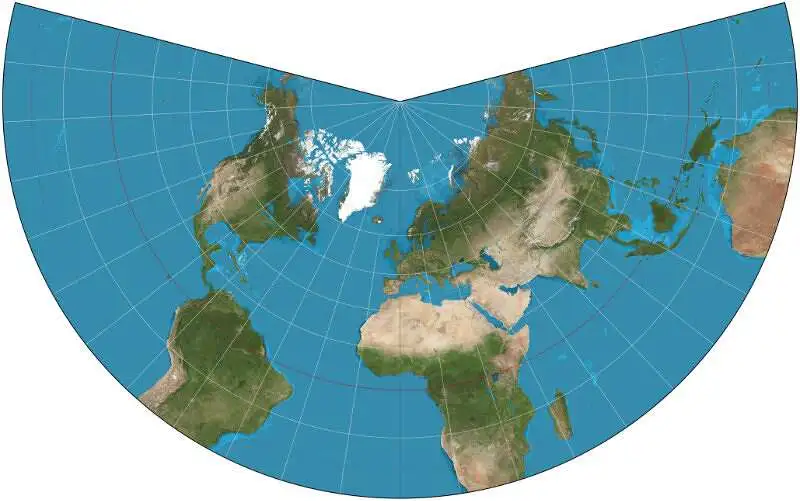
Lambert conformal chart
Air samples were pumped into a tank in the bomb bay and paper filters were fitted in units on the wings. The filter papers were analysed by us but with a high reading usually meant a trip to Harwell for someone. I never knew where the tank collection went.
During the petrol rationing period in 1956 a trip to Harwell was a useful source of coupons.
Most of our tasks were flying around 64.00N. We also had a number of trips to Gibraltar, flying down the African coast or to the west. On one occasion my pilot asked whether we were scheduled to be over land, when we cleared cloud cover. We were not. Our forecasted wind had considerably increased. The following day the same flight path and our winds forecast were those I reported the day before my readings of the day before. On questioning the forecaster, he said my information was the best he had.
Gibraltar airfield crosses the main road from Spain to Gibraltar, and the aircraft aprons were easily seen from the road. We witnessed a gentleman photographing our aircraft, which were classified. We confiscated his film and destroyed it. He said he had come over from Agadir (North Africa) and we wondered what else might have been on that film.
15 months later we moved to Hemswell, replacing the last Lincoln squadron (199 Squadron). The move to Lincolnshire meant a farewell to the Somerset Air Force (as we liked to think ourselves) and many attachments, leave passes and train tickets quite often were to Taunton or Bridgewater. One of the Squadron had an old Morris car which we did not think would make it to Hemswell, it was therefore classed as a towing machine requiring space on a Queen Mary transport.
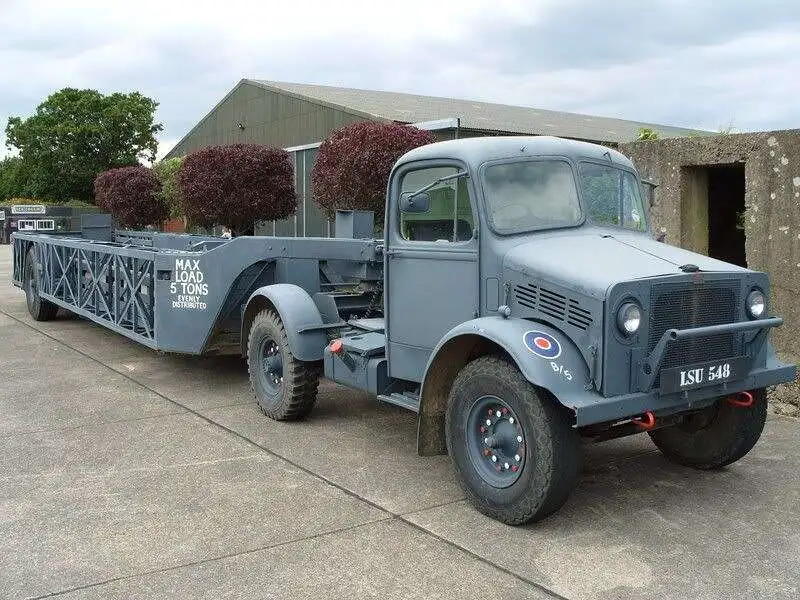
RAF Queen Mary Transporter
After 15 months my two crew members were posted to V-Force having had their standard tour with the Flight/Squadron. Thereafter I flew with many other crews. I was also tasked with measuring the paper filters to determine whether they were Harwell bound.
Being Lincolnshire, the usual winter weather occurred in 1957, and we had to dig ourselves out off the main road to Gainsborough and clear the runway. On another occasion, I had been doing an inventory check in the Mess lasting a couple of days. I went to the Squadron the next day and there was 3cms of ice clinging to the windward side of the trees.
After 2 years and 8 months, 916 hours on Canberra’s my current flying tour completed, I was posted to Bomber Command. But that is another story.

On 27 July 1971, during his Royal Air Force training to become a jet pilot, King Charles III (HRH Prince Charles at the time) was introduced to the Vulcan. The
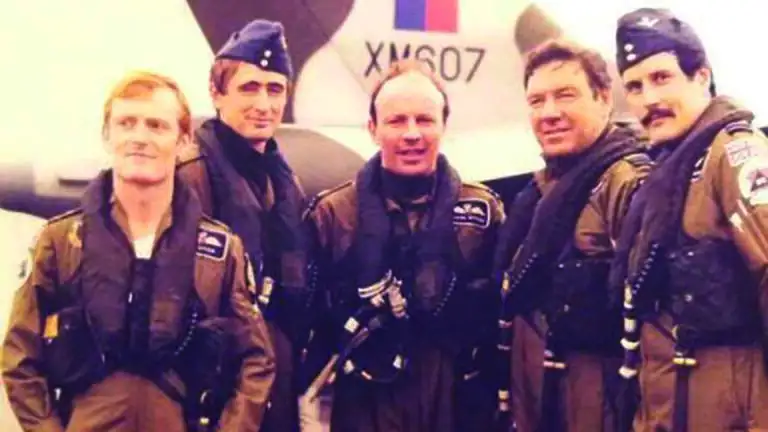
On 2 April 1982, Argentina invaded and occupied the Falkland Islands. It was the beginning of a ten-week conflict that ended with the Argentines surrendering
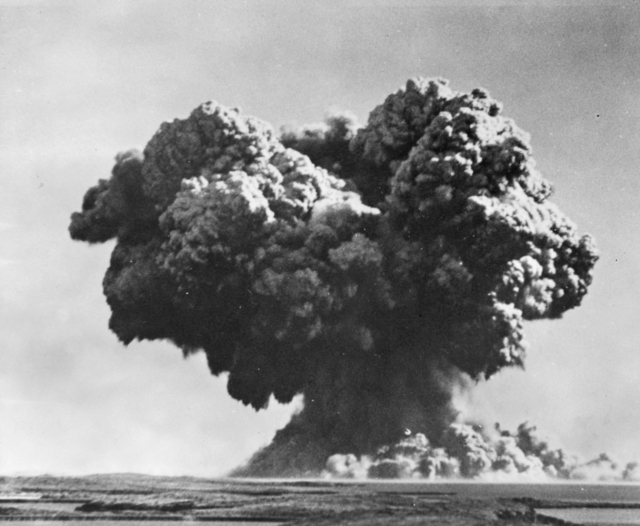
On 3 October 1952, Britain detonated their first atomic bomb. Due to the small size and high-density population of Britain there were no suitable sites
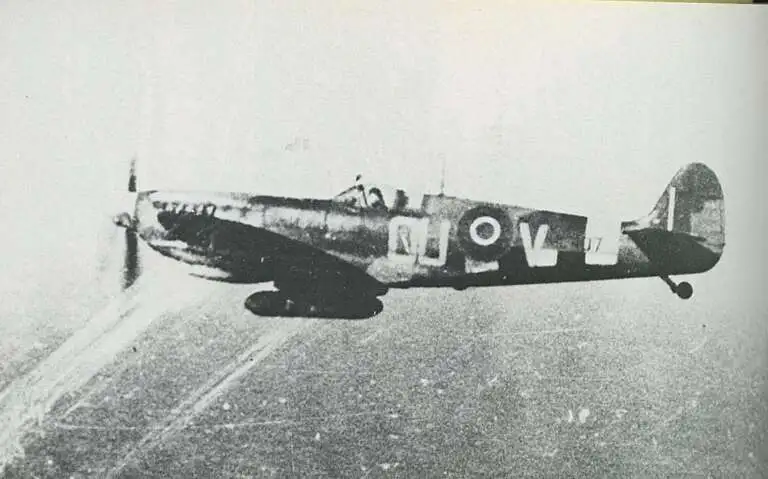
The year 1944, the month June, the day the 6th. The commencement of the invasion of Europe with Operation Neptune to transport 160,000 troops across